-
Pianos
-
Guitars
-
Instruments
-
Music
- Services
- Help & Advice
-
Events
- Sat 21 June: Yamaha Piano Day
- Thu 26 June, 6:30 PM - Iwan Owen: Piano Recital
- Sat 5 July from 10:30 am - Let’s Play The Piano! Mini Meetups
- Fri 18 July, 6:30 PM - Matthew Lau
- Sat 26 July 2pm: Free Seminar: M.A.D. Music & Art Seminar for Piano and Theory Graded Exam Tips, Accompaniment and Duet
- Fri 8 August, 6:30PM: Charity fundraiser for Tearfund - Mick Blaylock plays melodies for a summer evening
- Sat 23 August, 11:00 AM - Penelope Roskell: Piano Technique from Elementary to Intermediate
- Past Events
- Pre 2023 Events
- Music Lessons
- Blog
Workshop diary: resetting a guitar neck part one
We do a lot of set ups on acoustic guitars, and a common task that we do as part of a set up is reducing the saddle height to lower the action of the guitar. The saddle might need lowering for a number of reasons: perhaps the soundboard has expanded slightly due to an increase in humidity in the ambient conditions the guitar has been stored in, or perhaps it was simply left too high at the factory to begin with. In addition to that however, as guitars age the components can start to move in relation to each other causing the neck pitch (ie the angle the neck sits in relation to the body) to be shallower than it originally was. Eventually this becomes so significant that there is no longer any room to lower the saddle further, so more drastic measures are necessary to lower the action.In the old days, the obvious solution was to get out the plane and start shaving: either the bridge was thinned in height or the fingerboard was planed at the nut end to add an extra degree or two of angle. The problem with this is shaving the bridge can impact the tone and structural integrity of the guitar and shaving will also change the feel of the neck as well as the other two issues, so neither solution is very good. As the vintage market began to gather pace in the 1970s and the value of older Martin and Gibson acoustics started to creep up, more sophisticated repair techniques were developed and gradually the process of resetting the neck became established as the preferred approach. In this process the neck is removed from it's mortice in the neck block and the angle can then be adjusted and the neck refitted at an appropriate angle. Unlike shaving and other solutions, it's a process of restoring a guitar to its original state rather than modifying it to compensate for a problem, and it's the only one we're happy with on a high quality guitar.In this blog we're going to look at a neck reset on a 1976 Fylde Goodfellow. Later Fyldes are designed with a bolt on system but the early ones have a traditional dovetail joint as you might find on a vintage US guitar, so it's a good example of the process.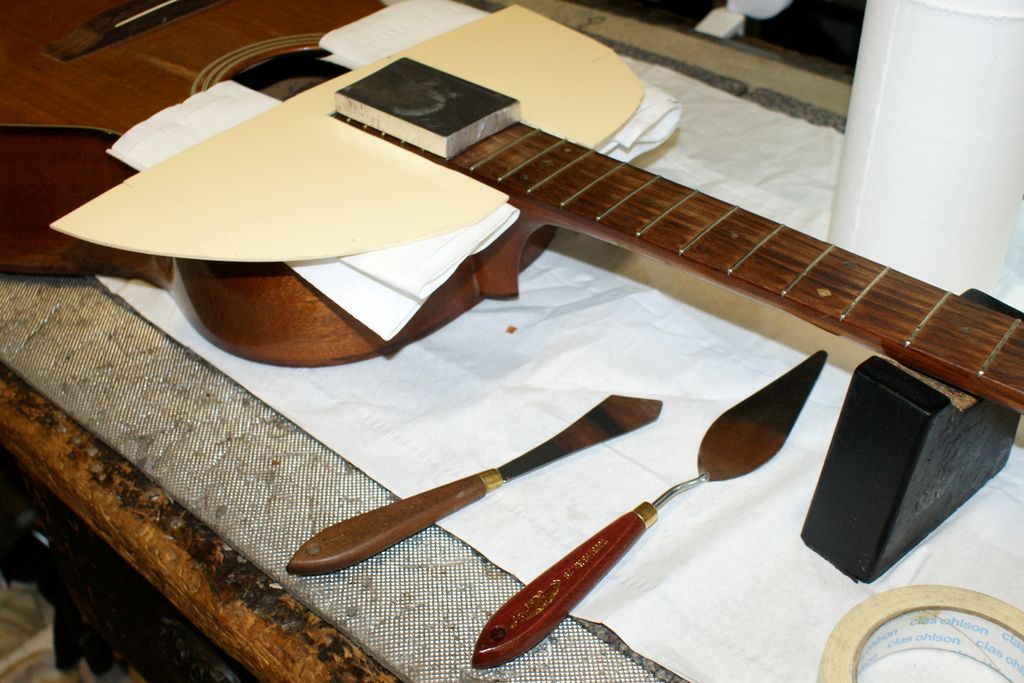
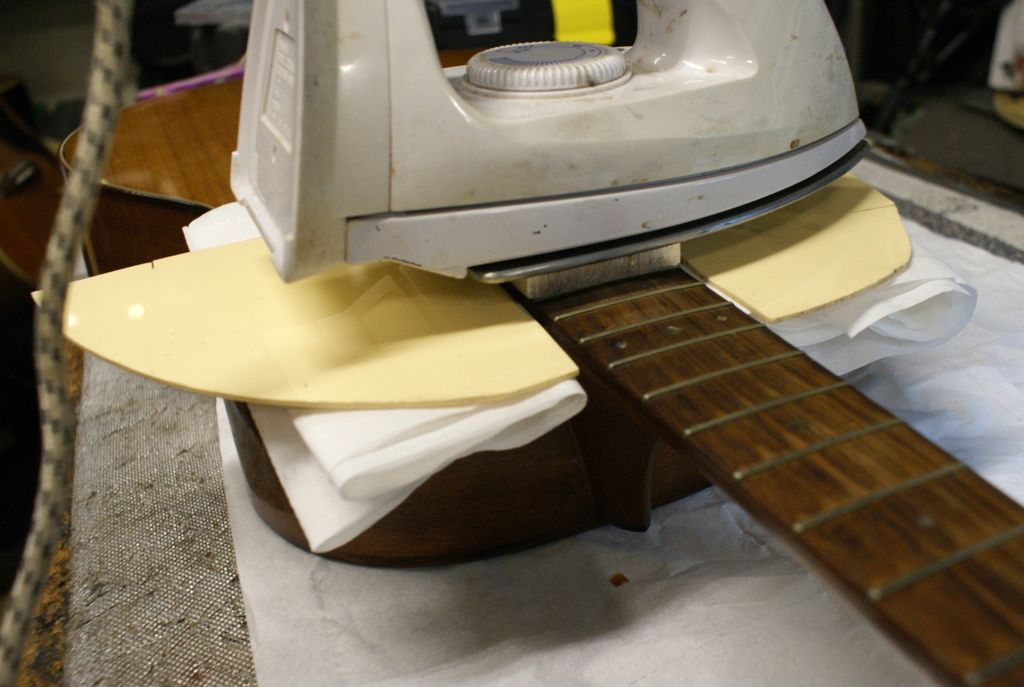
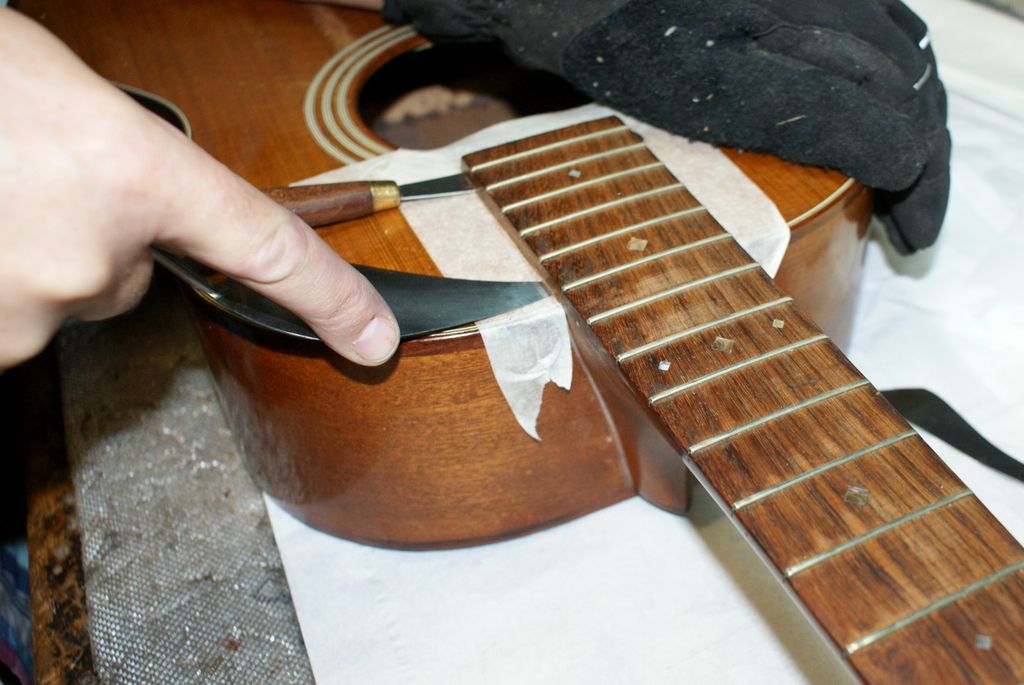
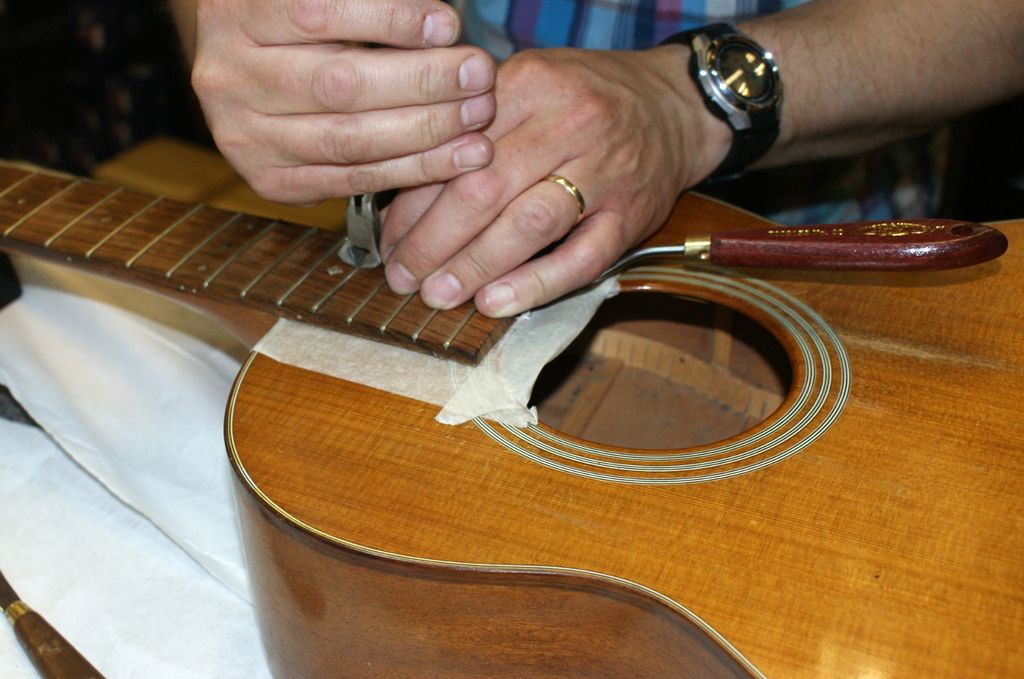
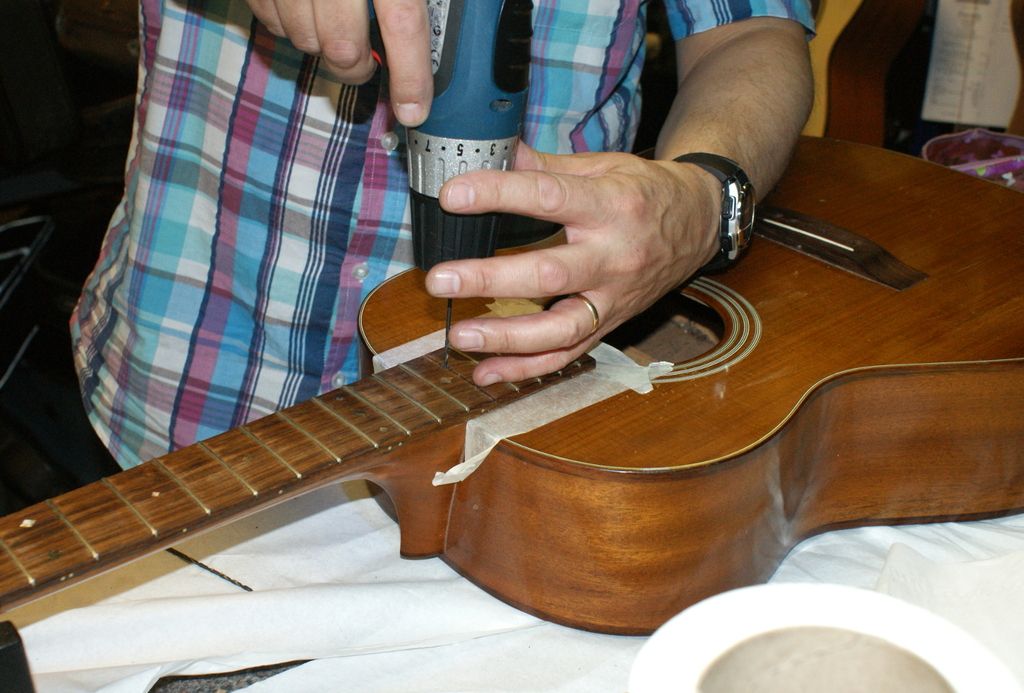
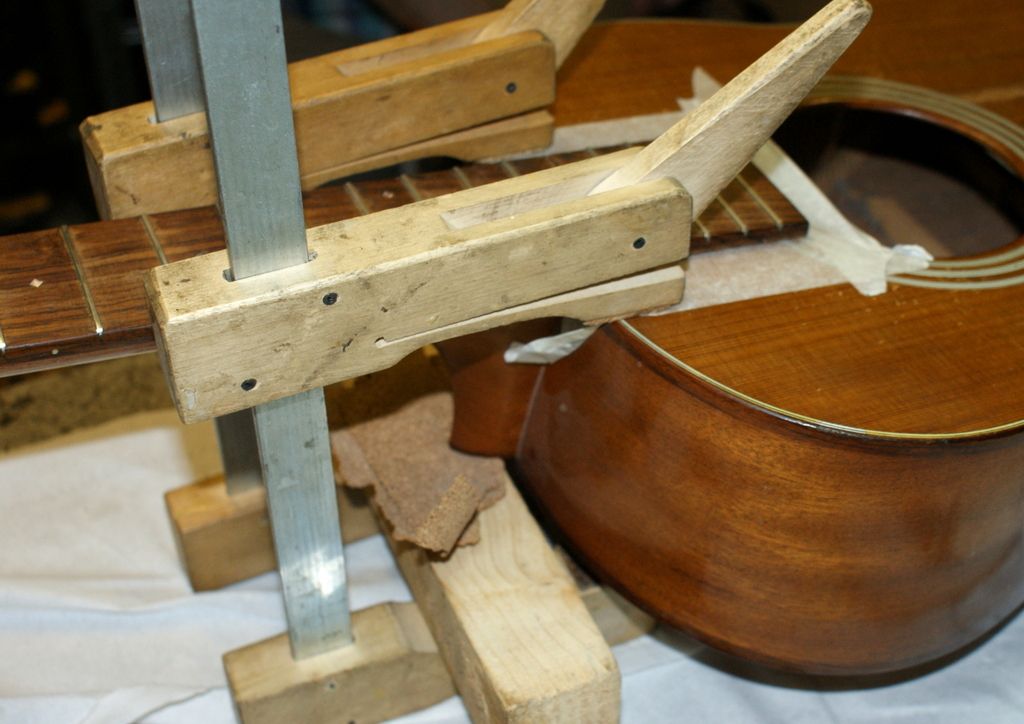
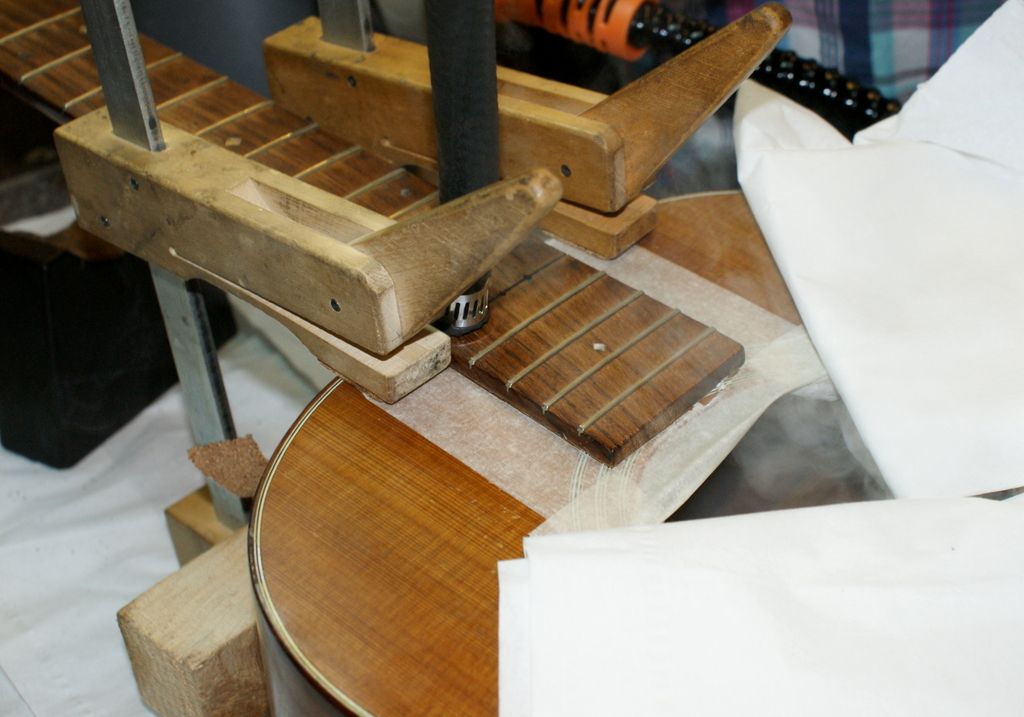
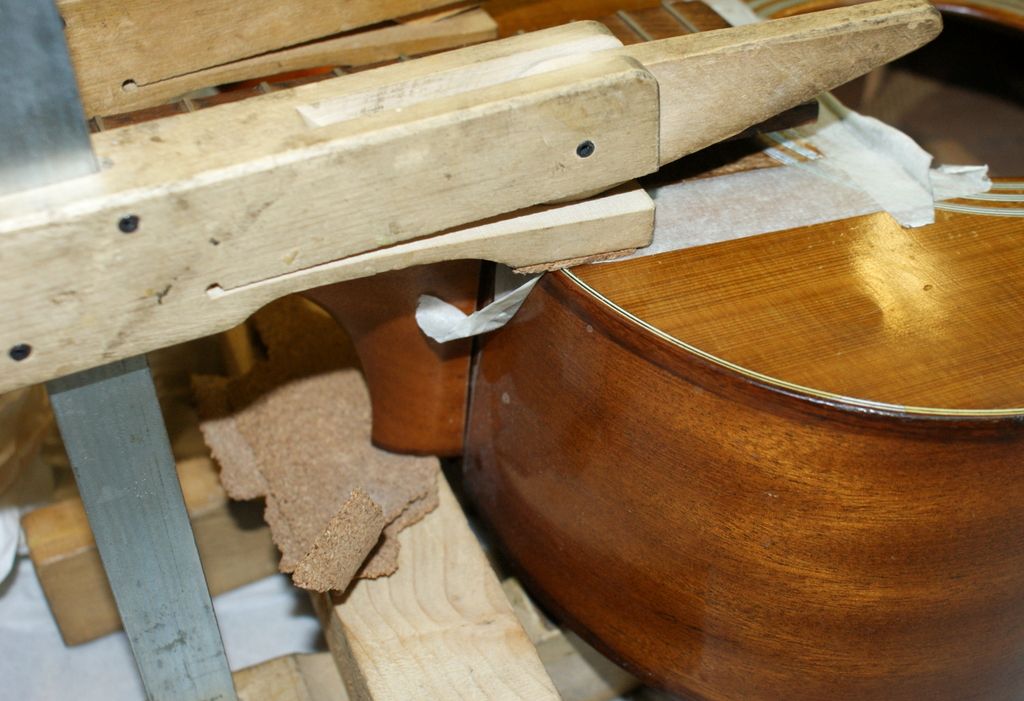
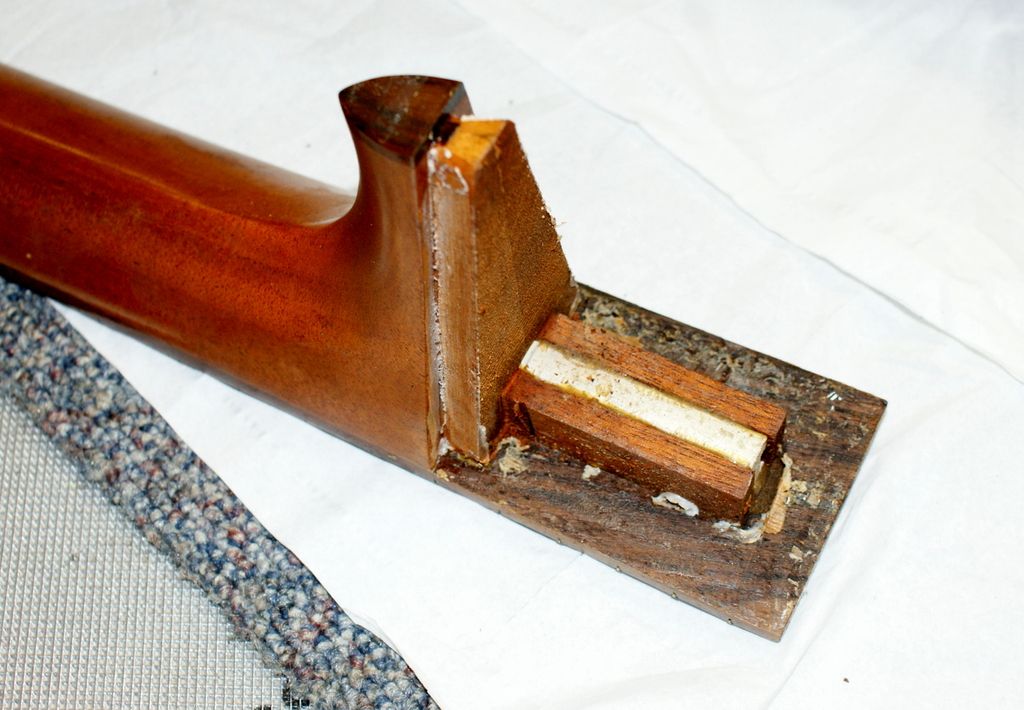











Posted On: Aug 9, 2016
Categories: Guitar Department , Guitars
